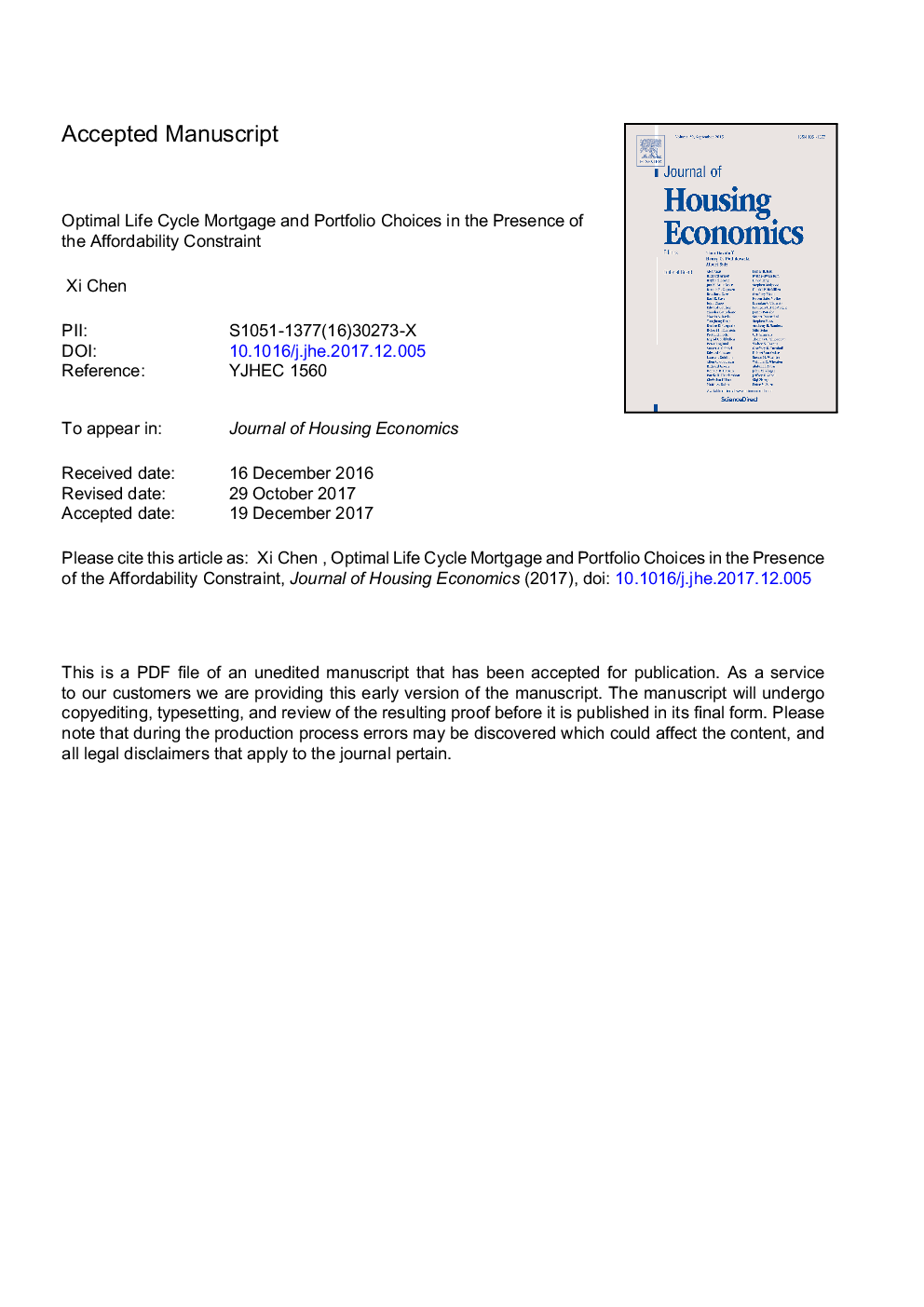| Article ID | Journal | Published Year | Pages | File Type |
|---|---|---|---|---|
| 7363685 | Journal of Housing Economics | 2018 | 34 Pages |
Abstract
In the past decades, affordability has become a more important issue in housing research. The recent subprime mortgage crisis has shed light on the imperative need to address the affordability challenge. The purpose of this paper is to analyse the housing affordability constraint from a conceptual and analytical standpoint by highlighting its role in a dynamic life cycle modelling framework. We attempt to assess quantitatively the impact of the affordability constraint on households' optimal consumption, mortgage, portfolio choices and poverty status over their lifetime. Meanwhile, we investigate the interaction between borrower-based macroprudential policies and social policies aimed at improving poverty and fostering home ownership and credit availability. Based on our simulation results, the mortgage affordability constraint is shown to have a significant impact in the prime and subprime mortgage markets. Moreover, the sensitivity analysis confirms the findings of the baseline case and emphasises that there is a non-linear (hump-shaped) relationship between affordability degrees and housing-caused poverty, particular in the age groups above 40. This implies that, in the light of the age profile of households and the features of mortgage credit markets, the magnitudes of the borrower-based macroprudential policies need careful assessment to minimise the potential conflicts with other social policies.
Keywords
Related Topics
Social Sciences and Humanities
Economics, Econometrics and Finance
Economics and Econometrics
Authors
Xi Chen,
